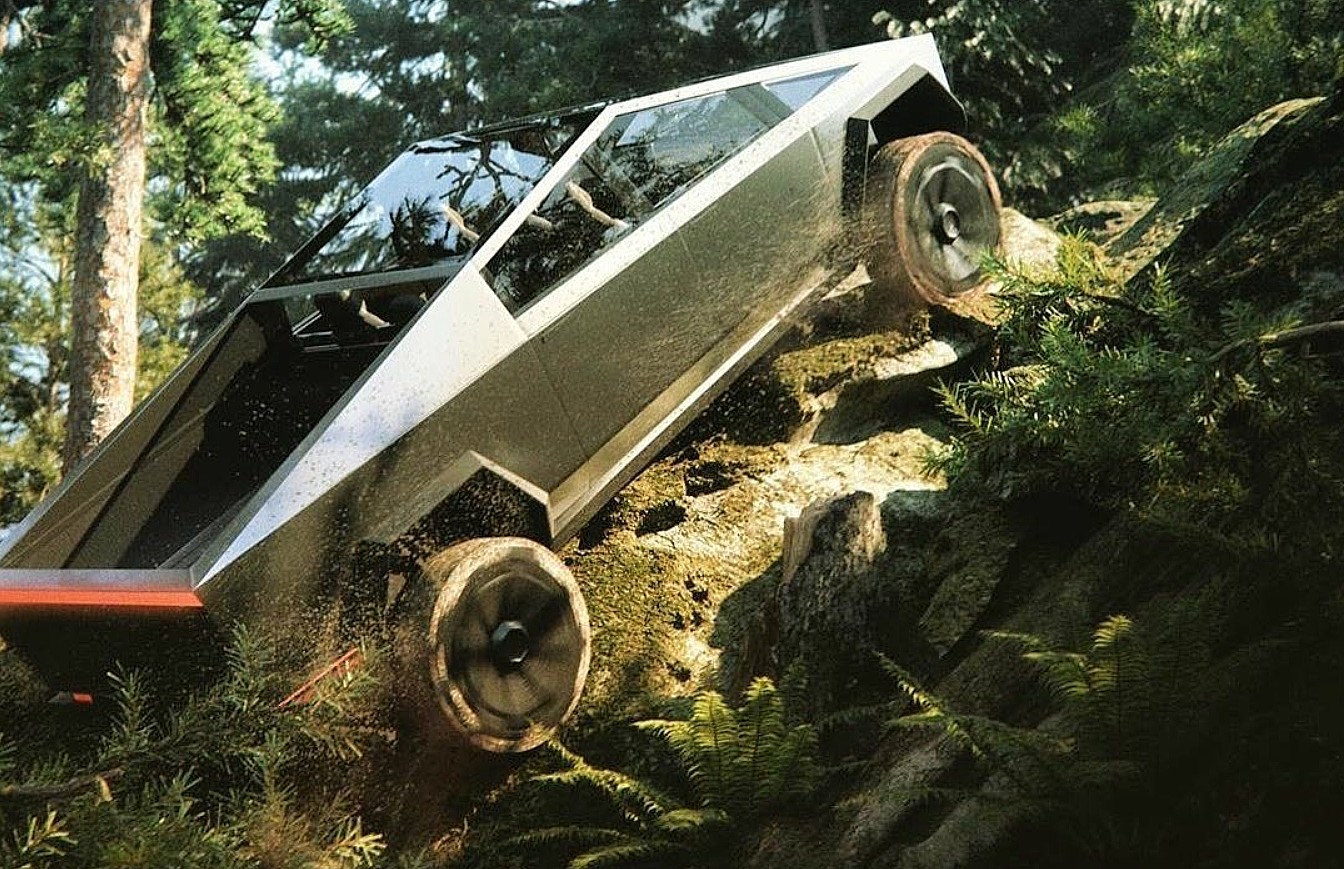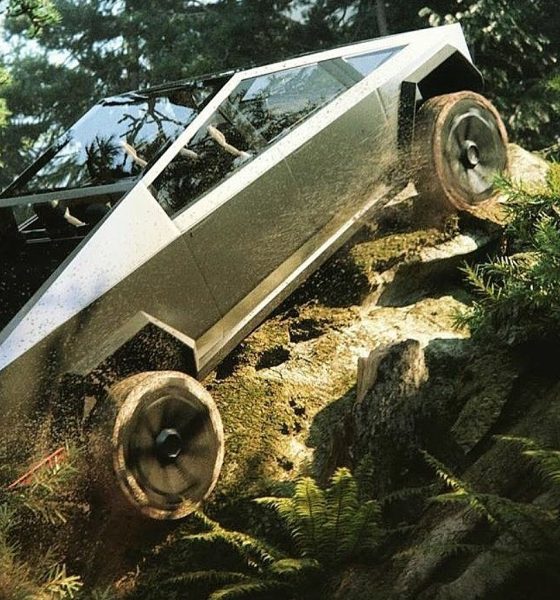

News
Morgan Stanley explains why Tesla’s first ‘Terafactory’ will be a perfect fit for Texas
Morgan Stanley analyst Adam Jonas believes that Tesla’s newest electric vehicle production facility will land in Texas. In an investor’s note on Monday, the analyst gave six key reasons for why he believes Texas will be Tesla’s newest home.
The upcoming facility is expected to be dedicated for the production of the Cybertruck, which will require a different manufacturing system compared to Tesla’s previous cars. The factory will be massive, and in the first quarter earnings call, Musk even mentioned that the Gigafactories will probably be referred to as “Terafactories” soon.
Following are Morgan Stanley’s reasons why Texas may very well be the site of the Cybertruck’s “Terafactory.”
Tesla’s need to join other manufacturers in states
Jonas recognizes that Tesla is the only Original Equipment Manufacturer (OEM) to have its main production facility in California. While Michigan has long been the home of the American automotive market, Tesla has called California home since its early days. Tesla is as much of a technology company as it is a carmaker, and technology lives in Silicon Valley.
However, Jonas sees unique disadvantages in having the main production facility located in CA. Concerning location and logistics, vehicle delivery times are extended for those who do not live in the western portion of the United States. Tesla owners who live on the East Coast are subjected to longer wait times for their vehicles due to transit and logistics delays. This is one of the main reasons a production facility that is centrally located in the country would be advantageous, Jonas says.
Texas has a hearty automotive manufacturing employment rate
Texas ranks fourth out of all fifty U.S. States in automotive manufacturing. This statistic comes from the US Department of Labor. Not only could Tesla increase its production rate as a company, but it could also provide a sizable economic boost by offering automotive production employment in a state that already has the enthusiasm for building vehicles.
Texas’ relaxed labor union representation fits Tesla’s bill
Jonas believes Tesla would prefer to operate in a state with a labor union representation that is not as heavy. Texas is a right-to-work state, where labor costs are affordable. Considering that the facility will be responsible for producing Tesla’s first pickup, the Cybertruck, along with the Model Y crossover, the workload will require a hefty workforce. Tesla will likely be looking to save where it can in a state that won’t break the company’s budget, and in Texas, The cost of doing business is significantly less than California, Jonas said.
Texas is a hotspot for renewable energy
Jonas recognizes Tesla’s identification as an “integrated renewable energy generation, storage, and transportation company.” Tesla would likely prefer a state with an abundance of renewable solar energy that could sustainably drive its manufacturing operations. Texas is a state with a warm and sunny climate, making it perfect for solar energy. The Morgan Stanley analyst noted that the state’s predictable climate and weather outlook would be beneficial to Tesla.
Elon Musk’s SpaceX holds its operations in Boca Chica, Texas
SpaceX has held its operations in Boca Chica, Texas since 2012. While its main rocket facility is in Hawthorne, California, Boca Chica is where SpaceX chooses to launch some of its rockets. The site first launched a rocket on April 5, 2019. However, Jonas seems to believe that Musk’s comfortability with Texas and SpaceX could extend to Tesla. “Synergies in management time and, over time, possibly increased cooperation between Tesla and SpaceX make Texas an appealing option for the next U.S. Giga,” Jonas wrote.
Tesla’s presence in the heart of U.S. Oil and Gas is “symbolic”
Jonas and other Morgan Stanley investors said that U.S. lawmakers and the public might see a “symbolic and, in many ways, well-timed” investment by Tesla in Texas. The state has long been the heart of the United States’ oil and natural gas industry, and a sustainable energy company moving into Texas could be a hint toward the inevitable transition to clean energy.
While Tesla CEO Elon Musk has mentioned that the newest production facility is going to end up in the Central United States, there has been confirmation that Texas is indeed the definite the landing spot for the upcoming facility. However, Musk did use a Twitter poll to test the waters of Texas’ acceptance as the location of the newest factory, and the results were positive.
Both Musk and CFO Zachary Kirkhorn mentioned that the new production facility could be the company’s largest plant yet, hinting that it might be called a “Terafactory” instead. There is no indication of when Tesla will announce the facility’s final location. Still, Texas certainly seems like a very good fit for the Cybertruck facility.

Elon Musk
Elon Musk’s X will start using a Tesla-like software update strategy
The initiative seems designed to accelerate updates to the social media platform, while maintaining maximum transparency.

Elon Musk’s social media platform X will adopt a Tesla-esque approach to software updates for its algorithm.
The initiative seems designed to accelerate updates to the social media platform, while maintaining maximum transparency.
X’s updates to its updates
As per Musk in a post on X, the social media company will be making a new algorithm to determine what organic and advertising posts are recommended to users. These updates would then be repeated every four weeks.
“We will make the new 𝕏 algorithm, including all code used to determine what organic and advertising posts are recommended to users, open source in 7 days. This will be repeated every 4 weeks, with comprehensive developer notes, to help you understand what changed,” Musk wrote in his post.
The initiative somewhat mirrors Tesla’s over-the-air update model, where vehicle software is regularly refined and pushed to users with detailed release notes. This should allow users to better understand the details of X’s every update and foster a healthy feedback loop for the social media platform.
xAI and X
X, formerly Twitter, has been acquired by Elon Musk’s artificial intelligence startup, xAI last year. Since then, xAI has seen a rapid rise in valuation. Following the company’s the company’s upsized $20 billion Series E funding round, estimates now suggest that xAI is worth tens about $230 to $235 billion. That’s several times larger than Tesla when Elon Musk received his controversial 2018 CEO Performance Award.
As per xAI, the Series E funding round attracted a diverse group of investors, including Valor Equity Partners, Stepstone Group, Fidelity Management & Research Company, Qatar Investment Authority, MGX, and Baron Capital Group, among others. Strategic partners NVIDIA and Cisco Investments also continued support for building the world’s largest GPU clusters.
News
Tesla FSD Supervised wins MotorTrend’s Best Driver Assistance Award
The decision marks a notable reversal for the publication from prior years, with judges citing major real-world improvements that pushed Tesla’s latest FSD software ahead of every competing ADAS system.

Tesla’s Full Self-Driving (Supervised) system has been named the best driver-assistance technology on the market, earning top honors at the 2026 MotorTrend Best Tech Awards.
The decision marks a notable reversal for the publication from prior years, with judges citing major real-world improvements that pushed Tesla’s latest FSD software ahead of every competing ADAS system. And it wasn’t even close.
MotorTrend reverses course
MotorTrend awarded Tesla FSD (Supervised) its 2026 Best Tech Driver Assistance title after extensive testing of the latest v14 software. The publication acknowledged that it had previously criticized earlier versions of FSD for erratic behavior and near-miss incidents, ultimately favoring rivals such as GM’s Super Cruise in earlier evaluations.
According to MotorTrend, the newest iteration of FSD resolved many of those shortcomings. Testers said v14 showed far smoother behavior in complex urban scenarios, including unprotected left turns, traffic circles, emergency vehicles, and dense city streets. While the system still requires constant driver supervision, judges concluded that no other advanced driver-assistance system currently matches its breadth of capability.
Unlike rival systems that rely on combinations of cameras, radar, lidar, and mapped highways, Tesla’s FSD operates using a camera-only approach and is capable of driving on city streets, rural roads, and freeways. MotorTrend stated that pure utility, the ability to handle nearly all road types, ultimately separated FSD from competitors like Ford BlueCruise, GM Super Cruise, and BMW’s Highway Assistant.
High cost and high capability
MotorTrend also addressed FSD’s pricing, which remains significantly higher than rival systems. Tesla currently charges $8,000 for a one-time purchase or $99 per month for a subscription, compared with far lower upfront and subscription costs from other automakers. The publication noted that the premium is justified given FSD’s unmatched scope and continuous software evolution.
Safety remained a central focus of the evaluation. While testers reported collision-free operation over thousands of miles, they noted ongoing concerns around FSD’s configurable driving modes, including options that allow aggressive driving and speeds beyond posted limits. MotorTrend emphasized that, like all Level 2 systems, FSD still depends on a fully attentive human driver at all times.
Despite those caveats, the publication concluded that Tesla’s rapid software progress fundamentally reshaped the competitive landscape. For drivers seeking the most capable hands-on driver-assistance system available today, MotorTrend concluded Tesla FSD (Supervised) now stands alone at the top.
News
Elon Musk’s Grokipedia surges to 5.6M articles, almost 79% of English Wikipedia
The explosive growth marks a major milestone for the AI-powered online encyclopedia, which was launched by Elon Musk’s xAI just months ago.

Elon Musk’s Grokipedia has grown to an impressive 5,615,201 articles as of today, closing in on 79% of the English Wikipedia’s current total of 7,119,376 articles.
The explosive growth marks a major milestone for the AI-powered online encyclopedia, which was launched by Elon Musk’s xAI just months ago. Needless to say, it would only be a matter of time before Grokipedia exceeds English Wikipedia in sheer volume.
Grokipedia’s rapid growth
xAI’s vision for Grokipedia emphasizes neutrality, while Grok’s reasoning capabilities allow for fast drafting and fact-checking. When Elon Musk announced the initiative in late September 2025, he noted that Grokipedia would be an improvement to Wikipedia because it would be designed to avoid bias.
At the time, Musk noted that Grokipedia “is a necessary step towards the xAI goal of understanding the Universe.”
Grokipedia was launched in late October, and while xAI was careful to list it only as Version 0.1 at the time, the online encyclopedia immediately earned praise. Wikipedia co-founder Larry Sanger highlighted the project’s innovative approach, noting how it leverages AI to fill knowledge gaps and enable rapid updates. Netizens also observed how Grokipedia tends to present articles in a more objective manner compared to Wikipedia, which is edited by humans.
Elon Musk’s ambitious plans
With 5,615,201 total articles, Grokipedia has now grown to almost 79% of English Wikipedia’s article base. This is incredibly quick, though Grokipedia remains text-only for now. xAI, for its part, has now updated the online encyclopedia’s iteration to v0.2.
Elon Musk has shared bold ideas for Grokipedia, including sending a record of the entire knowledge base to space as part of xAI’s mission to preserve and expand human understanding. At some point, Musk stated that Grokipedia will be renamed to Encyclopedia Galactica, and it will be sent to the cosmos.
“When Grokipedia is good enough (long way to go), we will change the name to Encyclopedia Galactica. It will be an open source distillation of all knowledge, including audio, images and video. Join xAI to help build the sci-fi version of the Library of Alexandria!” Musk wrote, adding in a later post that “Copies will be etched in stone and sent to the Moon, Mars and beyond. This time, it will not be lost.”








